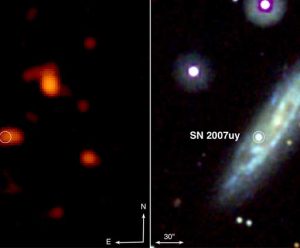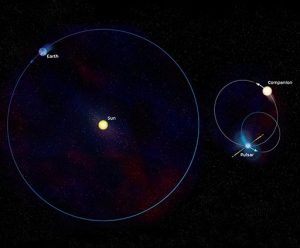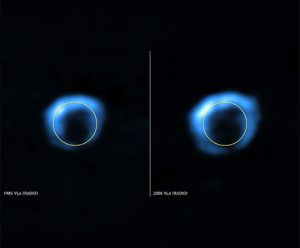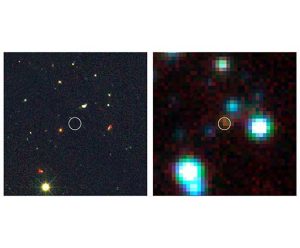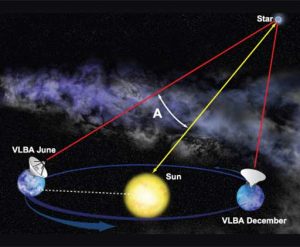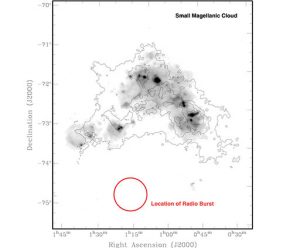Through a stroke of luck, astronomers have witnessed the first violent moments of a stellar explosion known as a supernova.
Weird Stellar Pair Puzzles Scientists
Astronomers have discovered a speedy spinning pulsar in an elongated orbit around an apparent Sun-like star, a combination never seen before, and one that has them puzzled about how the strange system developed.
Youngest Stellar Explosion in Our Galaxy Discovered
Astronomers have found the remains of the youngest supernova, or exploded star, in our Galaxy.
New View of Distant Galaxy Reveals Furious Star Formation
A furious rate of star formation discovered in a distant galaxy shows that galaxies in the early Universe developed either much faster or in a different way from what astronomers have thought.
VLBA Changes Picture of Famous Star-Forming Region
Using the supersharp radio vision of the National Science Foundation’s Very Long Baseline Array, astronomers have made the most precise measurement ever of the distance to a famous star-forming region.
Powerful Radio Burst Indicates New Astronomical Phenomenon
Astronomers studying archival data from an Australian radio telescope have discovered a powerful, short-lived burst of radio waves that they say indicates an entirely new type of astronomical phenomenon.






